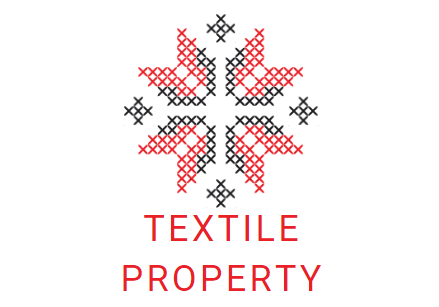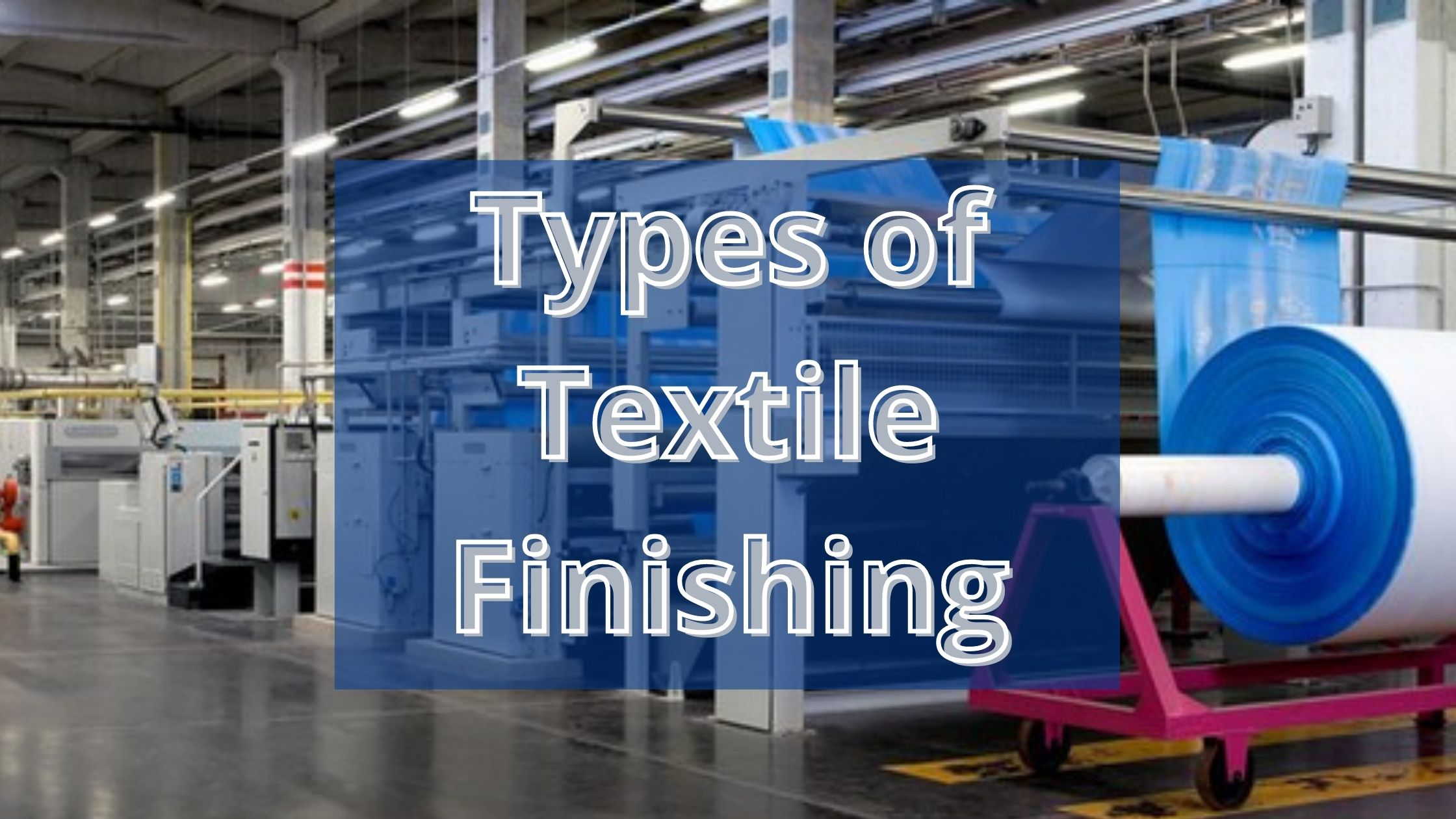Have you ever slept upon crisp cotton sheet or work in the fire by wearing any flame proof jacket? Then you enjoyed the blessing of finishing.
Most of the fabrics are produced in the factory. But after the production, it is not able to wear as it is. So, some treatments should be carried out. Different types of textile finishing is carried out to improve the properties, appearance or handle of the final fabrics.
What is Textile Finishing?
In a broad sense, finishing covers all the processes which the fabric undergoes after leaving loom or knitting m/c to the stage at which it enters the market. Thus the term also includes bleaching, scouring, dyeing but normally finishing is restricted to final stage processing after bleaching and dyeing.
Finishing, the final step in the fabric manufacturing process completes the fabric’s performance and gives it special functional properties including the final “touch”.
What are the types of textile finishing?
Textile finishing can be categorized in different ways. Have a look below!

Types of textile finishing: On the basis of purpose
- Asthetic finish: It modify the appearance or hand or drape of the fabrics.
For example:
- Handle
- Softness
- Lustre
- Fulling (volume increase of fabric)
- Compaction of wool
- Mercerization
- Napping
- Sueding
- Plisse
- Shearing
- Stiffing
- Softening
- Functional finish:
- Performance related finishing.
- Functional properties of fabric can change by using chemical or pysico-chemical techniques.
- To improve multiple functional properties, polymers are chosen instead of simple chemicals.
- A few finishes are listed below that improves the functional properties of fabric:
|
|
| Wrinkle resistance | Cellulosic fibers and their blends |
| Flame retardency | Most of the natural fiber and some synthetic fiber |
| Absorbency | Provides hydrophilicity to synthetic fibers |
| Soil release | Synthetic fibers and their blends |
| Water repellency | Cellulosic fibers |
| Resistance to micro-organism | All fibers for medical purpose |
| Resistance to insect | Mostly for wool |
| Resistance to static charge | Synthetic fibers |
| Resistance to pilling | High tenacity synthetic fibers and their blends |
| Abrasion and wear resistance | Cellulosic fibers and their blends |
| Thermal conductivity | All natural & synthetic fibers |
| Resistance to heat, UV light and pollutant | Natural and synthetic fibers |
Types of textile finishing: On the basis of durability
- Temporary finish:
- This finish remains upto one wash.This finishing washes away on washing. Life expectancy is very limited. Calendering, embossing, softening, starching are the examples of temporary finish.
- Paste containing starch and gum, filling agent, softening agent, glazing agent, wetting agent, optical brightener are uesd for temporary finish.
- Ingredients amount depends on the quality and hand feel that we want from the fabric.
- Softener imparts softening and glazing to the fabric surface. Wax emulsion, polyethelyne emulsion and glaring paste can be used.
- Starches like tapioca or maize can be used to impart stiffness and body lustre.
- For further finishing wetting agents are used to wet the fabric quickly.
- To compensate slight yellow tinge of the finished fabric, optical brightener like victoria blue or acid violet can be used.
- French chalk, china clay acts as filling agent and fills the fabric.
- Temporary finish
Temporary finish is of 3 types. Here they are:
![]() Pure finish: The cloth is stretched to a definite
Pure finish: The cloth is stretched to a definite
weidth, lightly calendered without adding any substances to improve appearance.
![]() Medium finish: Pure & medium finish are given to
Medium finish: Pure & medium finish are given to
fine fabric by increasing the weight of fabric from 5% to 7% by using starch.
![]() Heavy finish: Heavy calendering is given to poor quality fabric to convert original unpleasant feel of fabric into a smooth feel.
Heavy finish: Heavy calendering is given to poor quality fabric to convert original unpleasant feel of fabric into a smooth feel.
2. Semi-permanent finish
- Durable upto 5 to 10 wash.
- Durability lies between temporary and permanent finish.
- Its average lifespan depends on the finish used on fabric.
- Schreiner calendering or buckram finish are the examples of semi-permanent finish.
· Schreiner calendering: This operation gives a silk like brilliance to cotton fabric. This is carried out on cotton linings, sateen and printed fabric. Schreiner steel bowl contain 250 to 350 lines per inch to provide a soft lustrous handle to the fabric. 200 deg angle engraved line with 500 lines
per inch gives very lustrous effect. This finish lasts up to 5 to 10 wash.

Schreiner Calendering..is it a little bit confusing? Let’s find all about it…..
3. Permanent finish:
- Remains unaffected under all the conditions of wear and treatment.
- Lasts usually upto 20 to 30 wash.
- Done by chemical treatment.
- Some examples are listed below:
Ø Resin finish
Ø Sanforising (give dimensional stability by decreasing distance between warps and wefts)
Ø Flame proof
Ø Water proof
Ø Moth proof
Types of textile finishing: On the basis of quality
- Mechanical finish
- These are given by mechanical arrangements.
- Drying cylinders or stenter can be used to provide a series of calendering process.
- Mechanical finish is usually temporary.
- But a few permanent finish can also be achieved.
- It is known as dry finish.
- Some examples are given below:
| Temporary mechanical finish | Permanent mechanical finish |
| Beetling | Raising |
| Calendering | Crepe effect |
| Embossing & glazing | Parchmentizing |
| Breaking | Napping & brushing |
| Stretching | Sanforizing |
| Tentering | Shearing |
| Glazing | Decating |
| Decating | Tentering |
| Moireing | Singeing |
2. Chemical finish
- Chemical methods involve application or deposition of chemicals or carrying out a chemical reaction on the fabric.
- Generally, chemical finishes are permanent.
- But only a few may be temporary such as Anionic softener finish.
- Chemical finishes should be given uniformly throughout the fabric in order to change the chemical properties of the fabric.
- In this process, a chemical solution is applied with a suitable applicator. Then excess water is removed by drying and heating is carried out to activate the chemical.
- Proper formulation of chemical finish is quite difficult. Some factors are considered before finalizing the formulation. They are listed below:
Ø Composition and construction of textile
Ø Performance required
Ø Required procedure
Ø Environmental aspect
Ø Availability of machinery
Ø Compatibility with other chemicals
- For economical reason different types of chemical finishes are combined in one bath but it is the most challenging part. Because all the chemicals should be compatible with each other.
- Some components assists each other like silicone elastomers may enhance water repellency, softeners may bring additional antistatic effects and antistatic finishes can soften material further.
- On the other hand, some agents may impart opposite effects; for example, hydrophobic finishes and hydrophilic antistatic finishes, or stiffening and elastomeric finishes, or stiffening and softening finishes.
- While choosing Chemical finishes check the following criteria:
Ø Cost effectiveness
Ø Stability during storage and application
Ø Compatibility with other chemicals
Ø Bio-degradability
Ø No release of volatile compound
Ø Eco-friendlyness and non-toxicity
Ø No staining or yellowing of white stuffs
Ø Stability during washing and dry cleaning
- A list of permanent chemical finish are given below:
Ø Mercerizing
Ø Parchmentizing
Ø Silicon treatment for hydrophobic effect
Ø Fluoro chemicals for soil release & soil resistance
Ø Certain phosphorous & nitrogen compounds for flame retardant
Ø Wrinkle free or crease resistant finish
Ø Anti-microbial finish
Ø Anti-static finish
To Wrap Up!
Textile finishing is an important aspect for this industry. Because finishing process makes the grey fabric marketable. It can be said that Finishing process is the beautification process of fabric.
You can also check: Chemical finishing in Textile
Salma Hasin the author of this site completed her BSc. in Textile Engineering (Wet Processing Engineering). She wants to share her knowledge to help students in their studies and businessman & entrepreneurs in their businesses in making wise decisions fast.

